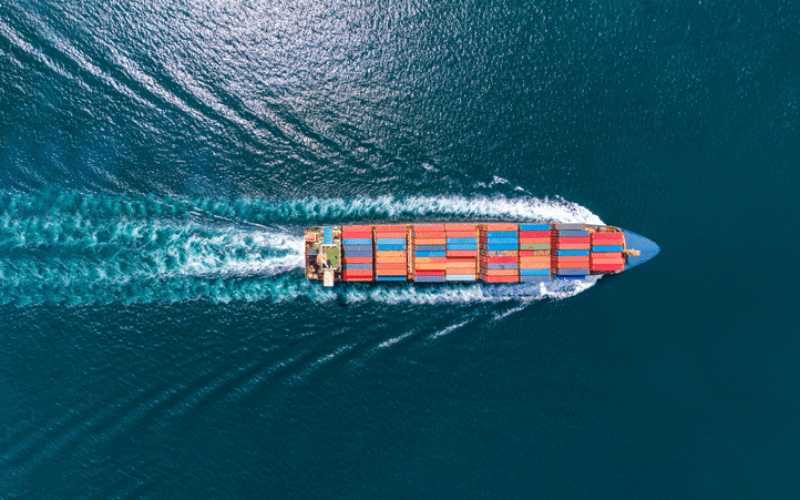Visibility: The Foundation of Today’s Resilient Supply Chain
With a 412% year-over-year increase in the mentions of “supply chain issues” by chief executives during the latest company earnings season, it likely comes as no surprise that the COVID-19 pandemic has brought a painful realization that today’s global supply chains are constantly exposed to a range of risks that can turn into costly disruptions.
The recent blockade of the Suez Canal, the closure of the Port of Yantian and the lack of shipping capacity are clear examples of disruptions that had serious consequences for many industries and businesses. But at the same time, we are also seeing rapidly increasing consumer demands, largely because of the explosive growth of e-commerce.
So, what can we do about it? Today’s supply chains are global, interconnected and complex — and will remain that way — and we need to better equip ourselves to anticipate and proactively manage the problems that arise.
And how do we do that? A significant part of the solution is to create greater resilience and agility by improving supply chain visibility:
Take advantage of new technologies to improve visibility and responsiveness
To be competitive in today’s complex supply chains, companies need to be able to manage disruptions before they occur — reacting afterward is too late and too expensive. But how can you manage what you don’t see and plan for what you don’t know?
With more well-developed business models and processes supported by machine learning (ML), that predictive end-to-end visibility can be achieved, resulting in a more resilient and agile supply chain.
More diversified supply chains
For a long time, supply chains have been increasingly slimmed down by just-in-time and large-scale outsourcing to low-cost countries, often to specific areas and suppliers. An outsourcing strategy focused solely on costs has led to a lack of diversification in global supply chains, the effects of which we are now seeing in the form of shortages of goods, materials, labor, and transportation capacity.
The fact that 12% of the world’s sea transport crosses the Suez Canal was the reason why the effects were so great from that event. The same goes for the Port of Yantian, where 90% of all the world’s electronics pass.
A resilient and agile supply chain cannot simply focus on a low-cost strategy; new, future-thinking ideas — such as more near-shoring and dual-sourcing — are required to create diversified supply chains.
Cross-functional cooperation
The biggest roadblock to achieving good, cross-functional collaboration is working in silos and not sharing date sufficiently within and between organizations. Breaking down these silos is more important than ever to enable visibility, data sharing and collaboration.
Oddly enough, technology is often the simplest part here — the challenge is creating the trust needed between the partners in the supply chain. Another hurdle to establishing successful supply chain collaboration is agreeing on common KPIs, which is often also due to a lack of trust and understanding.
Cross-functional visibility
If companies are going to be able to act fast and be agile, their supply chains need to be interconnected. Organizations need to be able to oversee demand, supply and existing inventory balances across their supply chain and quickly identify disruptions that could affect availability and delivery capacity, from end-to-end.
With cross-functional supply chain visibility, we can predict when goods are expected to arrive, the impact of any delays on other processes and what actions can be taken to avoid or manage delays.
To succeed, it is extremely important that everyone involved has access to the same data and information in real time. And the challenge here is to produce consistent data that is collected in one place and presented in a uniform way.
How to create real-time visibility?
A supply chain control tower platform can provide necessary visibility and create a good foundation for supply chain collaboration. During the Suez Canal blockade, Blue Yonder built a cross-functional team to help our customers locate their shipments and suggest how best to manage the delays. We were able to predict in real time how the blockade would hit their inventory levels, production capacity and sales — and then use those insights to mitigate the impact of the disruption.
Our solution, Luminate Control Tower (LCT), built on our Luminate Platform powered by Microsoft Azure, provides real-time visibility, supported by AI and ML, and it identifies not only the impact of a single event, but also the downstream effects. To learn more about how Blue Yonder can help navigate the new normal of continuous supply chain disruptions, watch this short video of Luminate Control Tower in action.
Resilience and agility do not come from visibility alone. Closing the gap between planning and execution is critical. In the next blog we will discuss how to achieve this boundaryless supply chain management.

